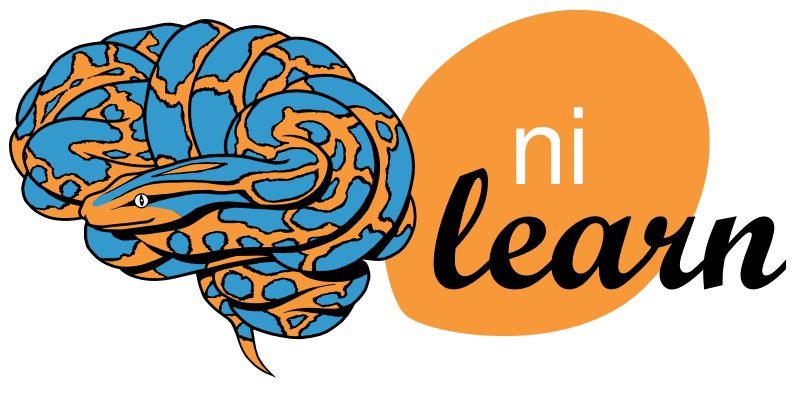Note
This page is a reference documentation. It only explains the class signature, and not how to use it. Please refer to the user guide for the big picture.
8.9.10. nilearn.regions.HierarchicalKMeans¶
- class nilearn.regions.HierarchicalKMeans(n_clusters, init='k-means++', batch_size=1000, n_init=10, max_no_improvement=10, verbose=0, random_state=0, scaling=False)[source]¶
Hierarchical KMeans: First clusterize the samples into big clusters. Then clusterize the samples inside these big clusters into smaller ones.
- Parameters
- n_clusters: int
The number of clusters to find.
- init{‘k-means++’, ‘random’ or an ndarray}
Method for initialization, defaults to ‘k-means++’:
‘k-means++’ : selects initial cluster centers for k-means clustering in a smart way to speed up convergence. See section Notes in k_init for more details.
‘random’: choose k observations (rows) at random from data for the initial centroids.
If an ndarray is passed, it should be of shape (n_clusters, n_features) and gives the initial centers.
- batch_sizeint, optional, default: 1000
Size of the mini batches. (Kmeans performed through MiniBatchKMeans)
- n_initint, default=10
Number of random initializations that are tried. In contrast to KMeans, the algorithm is only run once, using the best of the
n_initinitializations as measured by inertia.- max_no_improvementint, default: 10
Control early stopping based on the consecutive number of mini batches that does not yield an improvement on the smoothed inertia. To disable convergence detection based on inertia, set max_no_improvement to None.
- random_stateint, RandomState instance or None (default)
Determines random number generation for centroid initialization and random reassignment. Use an int to make the randomness deterministic.
- scaling: bool, optional (default False)
If scaling is True, each cluster is scaled by the square root of its size during transform(), preserving the l2-norm of the image. inverse_transform() will apply inversed scaling to yield an image with same l2-norm as input.
- verbose: int, optional (default 0)
Verbosity level.
- Attributes
- `labels_ `: ndarray, shape = [n_features]
cluster labels for each feature.
- `sizes_`: ndarray, shape = [n_features]
It contains the size of each cluster.
- __init__(n_clusters, init='k-means++', batch_size=1000, n_init=10, max_no_improvement=10, verbose=0, random_state=0, scaling=False)[source]¶
Initialize self. See help(type(self)) for accurate signature.
- fit(X, y=None)[source]¶
Compute clustering of the data.
- Parameters
- X: ndarray, shape = [n_features, n_samples]
Training data.
- y: Ignored
- Returns
- self
- transform(X, y=None)[source]¶
Apply clustering, reduce the dimensionality of the data.
- Parameters
- X: ndarray, shape = [n_features, n_samples]
Data to transform with the fitted clustering.
- Returns
- X_red: ndarray, shape = [n_clusters, n_samples]
Data reduced with agglomerated signal for each cluster
- inverse_transform(X_red)[source]¶
Send the reduced 2D data matrix back to the original feature space (voxels).
- Parameters
- X_red: ndarray , shape = [n_clusters, n_samples]
Data reduced with agglomerated signal for each cluster
- Returns
- X_inv: ndarray, shape = [n_features, n_samples]
Data reduced expanded to the original feature space
- fit_predict(X, y=None)¶
Perform clustering on X and returns cluster labels.
- Parameters
- Xarray-like of shape (n_samples, n_features)
Input data.
- yIgnored
Not used, present for API consistency by convention.
- Returns
- labelsndarray of shape (n_samples,), dtype=np.int64
Cluster labels.
- fit_transform(X, y=None, **fit_params)¶
Fit to data, then transform it.
Fits transformer to X and y with optional parameters fit_params and returns a transformed version of X.
- Parameters
- Xarray-like of shape (n_samples, n_features)
Input samples.
- yarray-like of shape (n_samples,) or (n_samples, n_outputs), default=None
Target values (None for unsupervised transformations).
- **fit_paramsdict
Additional fit parameters.
- Returns
- X_newndarray array of shape (n_samples, n_features_new)
Transformed array.
- get_params(deep=True)¶
Get parameters for this estimator.
- Parameters
- deepbool, default=True
If True, will return the parameters for this estimator and contained subobjects that are estimators.
- Returns
- paramsdict
Parameter names mapped to their values.
- set_params(**params)¶
Set the parameters of this estimator.
The method works on simple estimators as well as on nested objects (such as
Pipeline). The latter have parameters of the form<component>__<parameter>so that it’s possible to update each component of a nested object.- Parameters
- **paramsdict
Estimator parameters.
- Returns
- selfestimator instance
Estimator instance.
